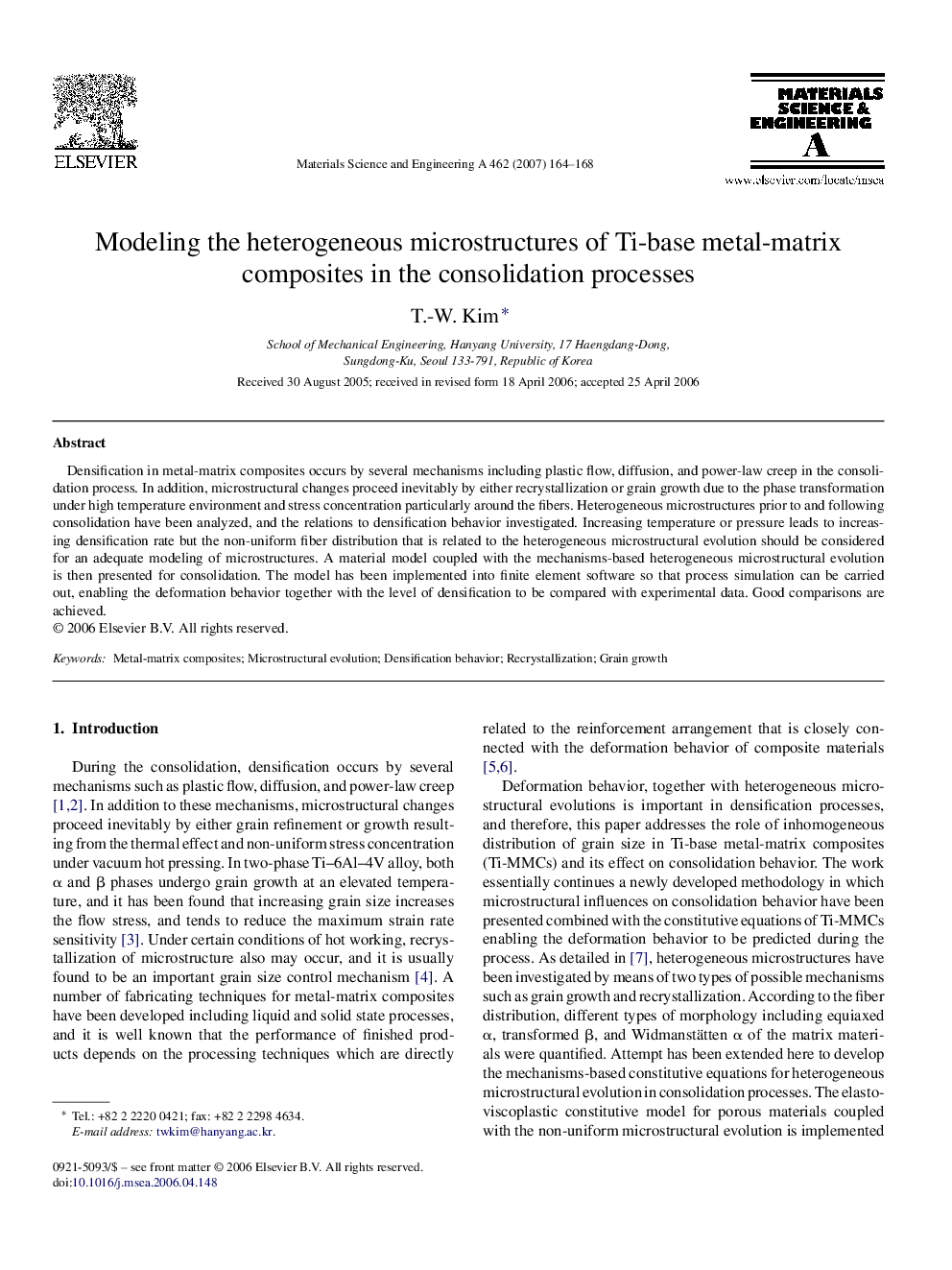| Article ID | Journal | Published Year | Pages | File Type |
|---|---|---|---|---|
| 1583385 | Materials Science and Engineering: A | 2007 | 5 Pages |
Abstract
Densification in metal-matrix composites occurs by several mechanisms including plastic flow, diffusion, and power-law creep in the consolidation process. In addition, microstructural changes proceed inevitably by either recrystallization or grain growth due to the phase transformation under high temperature environment and stress concentration particularly around the fibers. Heterogeneous microstructures prior to and following consolidation have been analyzed, and the relations to densification behavior investigated. Increasing temperature or pressure leads to increasing densification rate but the non-uniform fiber distribution that is related to the heterogeneous microstructural evolution should be considered for an adequate modeling of microstructures. A material model coupled with the mechanisms-based heterogeneous microstructural evolution is then presented for consolidation. The model has been implemented into finite element software so that process simulation can be carried out, enabling the deformation behavior together with the level of densification to be compared with experimental data. Good comparisons are achieved.
Keywords
Related Topics
Physical Sciences and Engineering
Materials Science
Materials Science (General)
Authors
T.-W. Kim,
